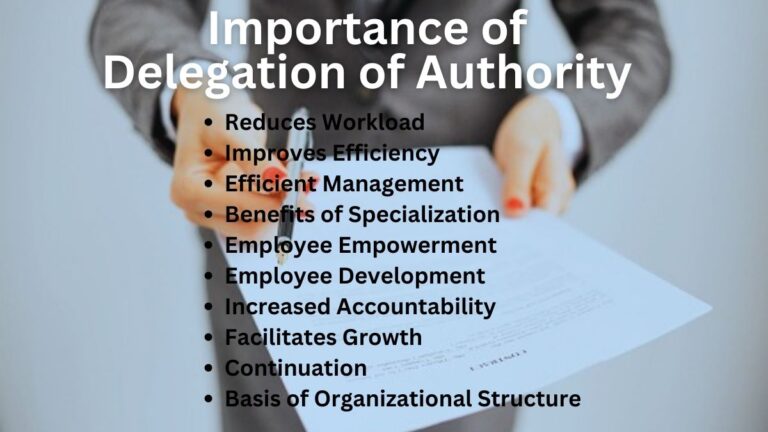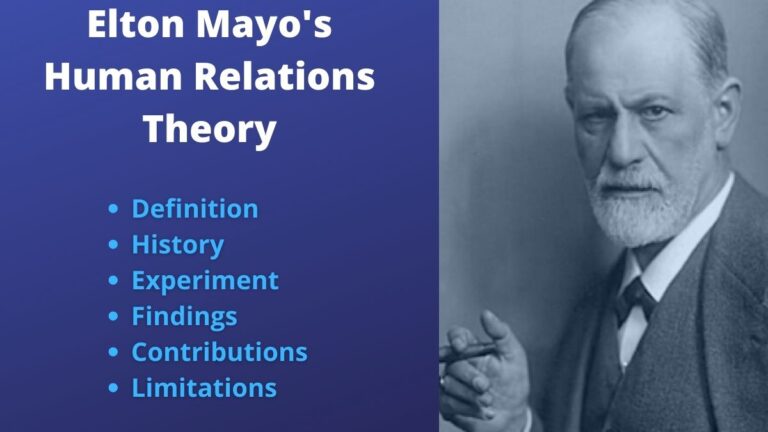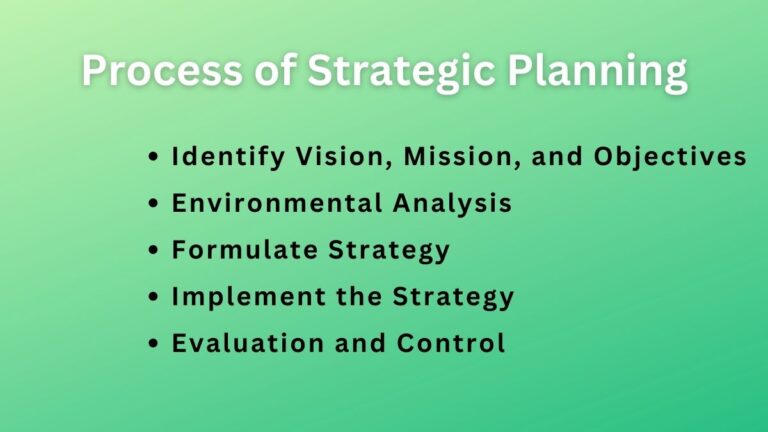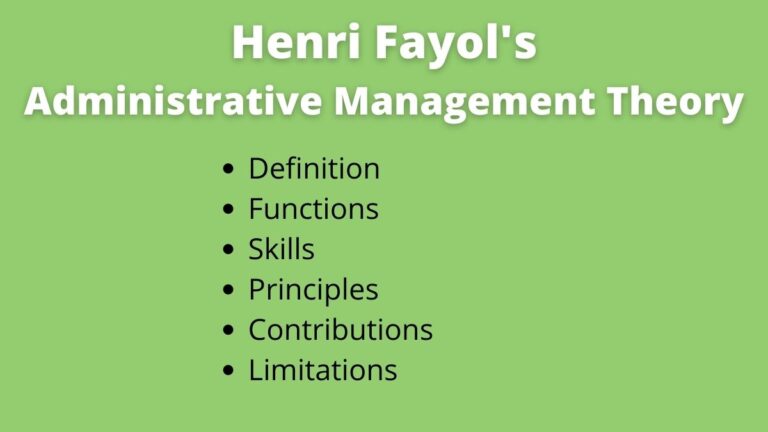What is Decision Making? Definition, Features, Process, Types, and Importance
Decision-making is an indispensable component of management function. Every organization’s success is a determinant of decisions made by the managers and how the decisions are implemented. Making the right decision is as important as setting the right plan. Let’s discuss what it is and how you can make the right decisions.
What is Decision Making?
Decision-making is the process of evaluating alternatives and selecting the most feasible one that has the potential to accomplish the organization’s desired goals and objectives. In simple language, it is nothing but the selection of the best alternative out of the pool of alternatives.
Decision-making is one of the important aspects of the management process like planning, organizing, staffing, directing, and controlling. It is an intellectual task of managers, the goal achievement is greatly determined by the decisions being made.
It is a continuous process in the organization, managers have to continuously be involved in the decision-making process from setting plans, goals, strategies, and policies, to implementing them and evaluating the performance.
The success of the organization has a direct relation with the manager’s ability to make the right decision and its implementation in the practical field. That is the reason, decision-making is also called the heart of management.
The managerial decision is the output of the decision-making process. In today’s competitive world, managers have a difficult job since one decision they make can determine whether an organization succeeds or fails. Therefore, managers must carefully identify every alternative that is now available and select the optimum mix of choices among those possibilities.
They had to have used all of the facts at their disposal as well as different evaluation methods during the course of the action. And, after all, they should select the alternative that is positive with the organization’s goals and available resources.
What is the Objective of Decision Making?
The main objectives of decision-making are mentioned below:
- Identification of goals and objectives the organization wants to achieve.
- Choose the option having the most potential.
- Effective utilization of organizational resources.
- Balancing the firm’s goals and resources with the decision being made.
- Effective implementation of the made decision.
- Ensuring the achievement of organizational goals.
Characteristics of Decision-Making
Decision-making is the process of identifying and selecting a course of action to solve specific problems – James Stoner. Its main features/characteristics are as follows:
Goal-Oriented
Whenever you make a decision on behalf of the organization your decision must be relevant to your organization’s goal. One of the features of decision-making is that it is always oriented toward organizational goals and their achievement.
Intellectual Process
During the course of managing an organization, managers have to go through different problems and unexpected situations, and in every situation, they have to make some decisions. Their intellectual ability determines whether or not their decision will get rid of those problems.
Related: What is Planning?
Continuous Process
It is a continual process as long as the organization is in existence. Numerous issues could come up during routine execution in a variety of circumstances. To maintain the smooth operation of the organization, managers must address these issues in a timely manner.
Solves Specific Problems
Usually, the process of making decisions is started to solve specific problems. The goal of decision-making is to identify a specific problem run for its solutions and end with its solution.
Pervasive
It is pervasive at all managerial levels, all functions, all organizations, and all functional areas of the organization.
Process of Decision Making
It is a continuous process of accomplishing daily activities for the long-term survival of the organization. Generally, a designed process is required to make effective decisions. The rational decisions making process involves the following steps.
Identifying and Diagnosing The Problem
Clarifying the issues and their causes is the first step in the decision-making process. It is important to specify precisely the difference between the current condition and the ideal situation.
Clear identification and diagnosis of the issue facilitate quick resolution. Without identifying the root causes of the issue, decisions cannot be made that will be successful.
Identifying The Alternatives
Each issue might have more than one potential resolution. Making more trustworthy and efficient selections is possible with the development of a wide range of alternative options.
Managers should therefore consider all options related to the choice. It is necessary to gather relevant data about potential solutions in order to evaluate them. There may be a need for numerous sophisticated mental processes to analyze the issue.
Evaluating The Alternatives
Each of the proposed alternatives should be assessed in this step based on decision factors such as overall cost, time, legal restrictions, and resource requirements for different options.
The evaluation criteria should be used to list and rate alternatives. Each new alternative’s rearrangement, modification, substitution, and deletion components should be thoroughly examined during this phase.
Choosing The Best Alternatives
This is the phase of the decision-making process that is most crucial. On the basis of evaluation, managers should choose the best alternative or collection of alternatives.
Related: Process of Planning
They should choose less expensive, less time-consuming, and more effective solutions by weighing their advantages and disadvantages. If any of the options are unsuitable, further research may be needed to come up with new solutions.
Implementing The Selected Alternative
Implementing is converting a decision into action. Managers should use their skills and ideas to implement the selected alternatives to get the desired results. Without proper implementation of decisions, it is meaningless to achieve the desired objectives.
Evaluation and Follow-Up
This is the final step that examines the degree of implementation effectiveness of decisions. They should be sure that the decision has served the purpose for which it was made. Feedback should be collected and adjustments should be made according to changes in the environment after evaluating the progress of implementation.
Types of Decision Making
Managers have to make different decisions in the organization based on time, situation, and requirements. Managerial decisions can be divided into different types, some are:
Programmed Decisions
A decision that is fairly structured or recurred with some frequency is called a programmed decision. Such decisions deal with repetitive and routine problems.
Non-Programmed Decisions
These decisions are relatively unstructured and occur much less often. Such decisions are required for unique problems and take more time, energy, and resources to explore the situation from all perspectives.
Formal Decisions
Formal decisions are also called organizational decisions. In such decisions, makers have to consider their formal authority before coming to any conclusion. They are bound by workplace formal rules before making final products.
Informal Decisions
These decisions are also called personal decisions. Such decisions do not affect the regular performance of the firm and are made on the basis of an individual’s personal skills, knowledge, and capacity.
Group Decision
In group decisions, a group of persons is involved in the decision-making process like the board of directors, partners, strategic alliances, management committee, etc. In such a course of action, they discuss the subject matter and come to a solution through mutual consent.
Individual Decision
A single person, such as the manager, general manager, or departmental manager, participates in the decision-making process when it comes to individual decisions. He must make decisions in this situation while taking organizational goals and the workplace into account.
Importance of Decision-Making
As we have discussed making decisions is crucial task managers have to do, and its importance is far-reaching. From starting off the business, during its courses of action, to its end managers have to make numerous decisions to smoothly run the organization towards its vision.
Since making the right decisions is the heart of management, its importance in an organization’s goals achievement is essential. Following are some of the decision-making important in the workplace.
- Helps to select the best alternative.
- Helps to identify and diagnose the problems.
- Supports in proper utilization of resources.
- Indispensible management component.
- Pervasive function.
- Employee motivation.
- Brings productivity.
- Helps to achieve organizational goals and objectives.
- Facilitates problem-solving.
Hence, in conclusion, we can say that decision-making is a tool for solving organizational problems and ensuring goal achievement through the selection of the right alternative from available alternatives.
Read Next: Styles of Decision Making
Sajan Kushmi is a content writer with more than 4 years of experience. He holds BIM Degree. He write on the topics related to Management, Marketing, and Entrepreneurship.






